- Quick Read
- Deep Read ( 4 Min. )

Why is Christian Science in our name?
Our name is about honesty. The Monitor is owned by The Christian Science Church, and we’ve always been transparent about that.
The Church publishes the Monitor because it sees good journalism as vital to progress in the world. Since 1908, we’ve aimed “to injure no man, but to bless all mankind,” as our founder, Mary Baker Eddy, put it.
Here, you’ll find award-winning journalism not driven by commercial influences – a news organization that takes seriously its mission to uplift the world by seeking solutions and finding reasons for credible hope.
Explore values journalism About usIn Today’s Issue
- Sleepless night: Uvalde seeks courage in a school shooting’s wake
- Why Fed says fighting inflation is Job 1, despite recession risk
- When does atrocity rise to the level of genocide?
- Wimbledon calls ‘fault’ on Russian tennis stars. Good move?
- A taste of Afghanistan helps these bakers find home in India
Monitor Daily Podcast
- Follow us:
- Apple Podcasts
- Spotify
- RSS Feed
- Download
TODAY’S INTRO
Looking for hope amid the heartbreak of another school shooting
Columbine. Sandy Hook. Parkland. Now Uvalde.
These are a few of the horrifically infamous examples of gun violence in American schools over the past two decades. Statistics tell us that such mass shootings are a tiny but tragic part of a much larger problem. But knowing that doesn’t make the deaths of innocent children any less painful. And so far, it’s done little to untangle America’s unique Gordian knot of gun rights, freedom, and security.
Seeing the arc of horror to apathy repeatedly play out is deeply discouraging. As citizens and editors we struggle with how to get from heartbreak to a sense of credible hope.
David Hogg’s response caught my attention this morning. A survivor of the 2018 Parkland shooting, he’s emerged as a prominent voice against gun violence. And somehow, in an NPR interview Wednesday, he sounded confident of progress.
“We as Americans – Democrats, Republicans, gun owners, and non gun owners – we’ve been debating this for decades. … We know what we don’t agree on. Let’s focus on what we can agree on – even if it’s tiny,” says Mr. Hogg. “Even if it saves just one life, we need to figure out what we can get Senate Republicans to agree on.”
Nationally, in Congress, there’s been little or no agreement on how to protect children from mass shootings. But in 2018, Mr. Hogg and other Parkland survivors successfully lobbied Florida Republican lawmakers to pass a “red flag” law – a court order to temporarily remove firearms from people who are potentially dangerous to others or themselves. Expect a Monitor story about red flag laws later this week.
And therein lies some hope. At the state and local level, communities are responding. The Sandy Hook Promise, for example, is a nonprofit program that has taught nearly 15 million students and teachers how to “know the signs” – identify at-risk behavior and seek help. Expect a Monitor story on that effort, too.
Until American voters choose leaders who are willing to make difficult changes nationally, the effort to solve this fatal problem appears likely to be led by parents, local officials, and communities.
Share this article
Link copied.

Help fund Monitor journalism for $11/ month
Already a subscriber? Login

Monitor journalism changes lives because we open that too-small box that most people think they live in. We believe news can and should expand a sense of identity and possibility beyond narrow conventional expectations.
Our work isn't possible without your support.
A letter from
Sleepless night: Uvalde seeks courage in a school shooting’s wake
Our reporter spoke with residents of Uvalde, Texas, a community coming together to deal with their grief, anger, and protecting their families.

Two dogs play at Kassy Salazar’s feet as she stands in her backyard, absorbing the loss of her cousin, a teacher at the Robb Elementary School. Trying to sleep, Ms. Salazar had hoped to wake up and learn it had all been a dream. Now she’s waiting for her parents, and for her cousin’s family to get here from the nearby town of Eagle Pass.
Uvalde “is not going to be the same ever again,” she says.
Nineteen children and two adults were killed Tuesday by a teenager, two days before school got out for the summer. It was the deadliest attack on an elementary school since the Sandy Hook shooting in Newtown, Connecticut, in 2012.
Felix Rubio spent the morning wandering the streets. One of his nephews had survived the shooting, but one of his nieces hadn’t. He spent the evening before shooing reporters away from his in-laws’ home.
“I feel lost,” he says. “I don’t know what to feel. I feel mad. I feel sad. I feel helpless.”
Whatever happens now, the town will face it together.
Ms. Salazar tried living in San Antonio for a while, but she came back. She’s not about to leave again.
“Family, friends, being together ... being here” gives her hope, she adds. “Our community is strong. We’ll get through this.”
Sleepless night: Uvalde seeks courage in a school shooting’s wake
Uvalde rose to a beautiful spring morning today – but most here had barely slept.
Kassy Salazar had tried to get some sleep, even after learning that her cousin, Eva Mireles, had been one of the teachers murdered at Robb Elementary School. The constant sirens outside her window kept her up.
Felix Rubio lay in his bed early in the morning, asking himself: Why? Why? Why? When he finally got up, he spent the morning wandering the streets here. One of his nephews had survived the shooting, but one of his nieces hadn’t. He spent the evening before shooing reporters away from his in-laws’ home.
“I feel lost,” he says. “I don’t know what to feel. I feel mad. I feel sad. I feel helpless.”
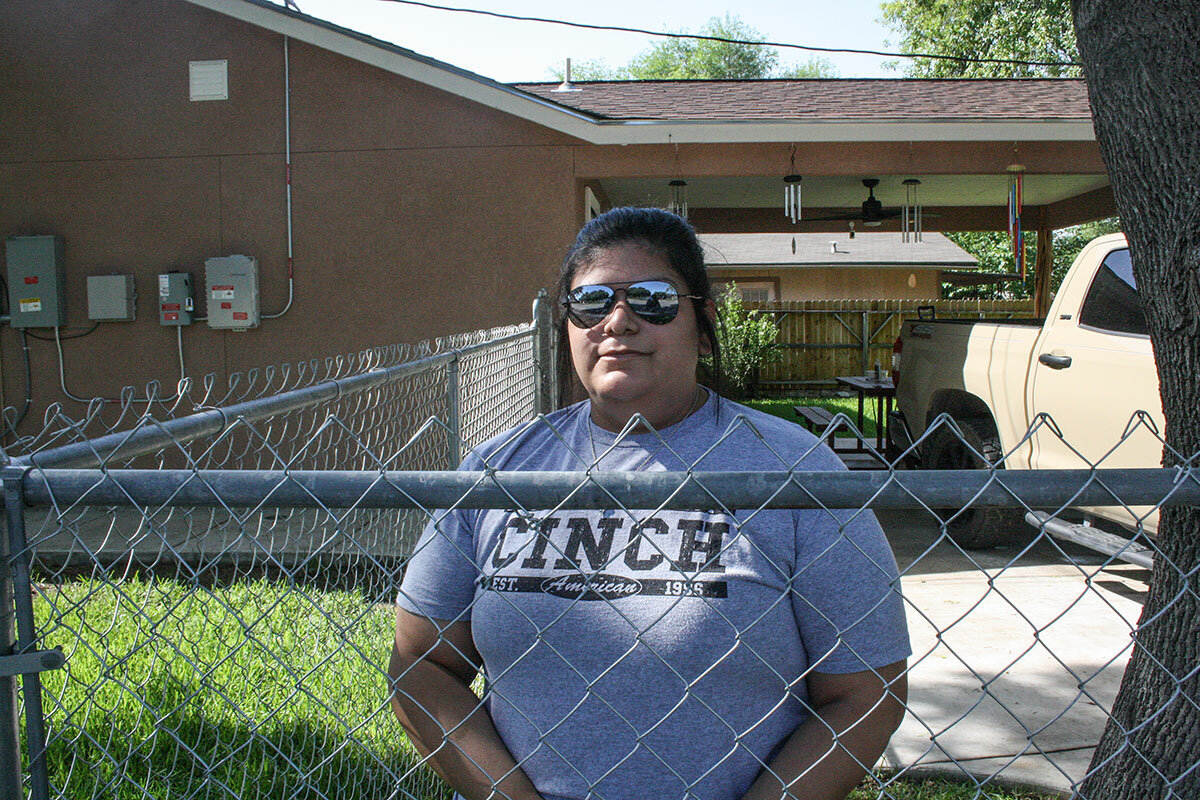
Nineteen children and two adults were killed Tuesday by a teenager, two days before school got out for the summer. It was the deadliest attack on an elementary school since the Sandy Hook shooting in Newtown, Connecticut, in 2012. Law enforcement officers and an off-duty Border Patrol officer engaged with the shooter after he crashed his car and ran into the school wearing body armor. He was ultimately killed.
“There’s no words that anybody can come up here and do anything to heal those broken hearts,” Texas Gov. Greg Abbott said Wednesday at a press conference. “Every Texan, every American, has a responsibility where we need to focus not on ourselves and our agenda, but the healing and hope we can provide to those who have suffered unconscionable damage to their lives – and loss of life.”
The morning was cool and quiet, as Uvalde seemed to sit in numb disbelief. Many stores that closed yesterday afternoon, as news of the shooting filtered through the town, stayed closed. Familiar questions echoed as they had in Santa Fe, in El Paso, and in Sutherland Springs. How could something like this happen here, in this town? In our town?
Why here, but also, why there? Ms. Salazar had been a student at Robb Elementary in third and fourth grade. She barely remembers it. So had Adolfo Hernandez, who went to the press conference held by Governor Abbott, so he could “protest the government.” After shouting at the governor from the back of the high school auditorium, he was escorted from the room.
“I’m heartbroken,” he said afterward, in the high school parking lot. “I feel terrible, and when my own government locks me out as well, it hurts even more.”
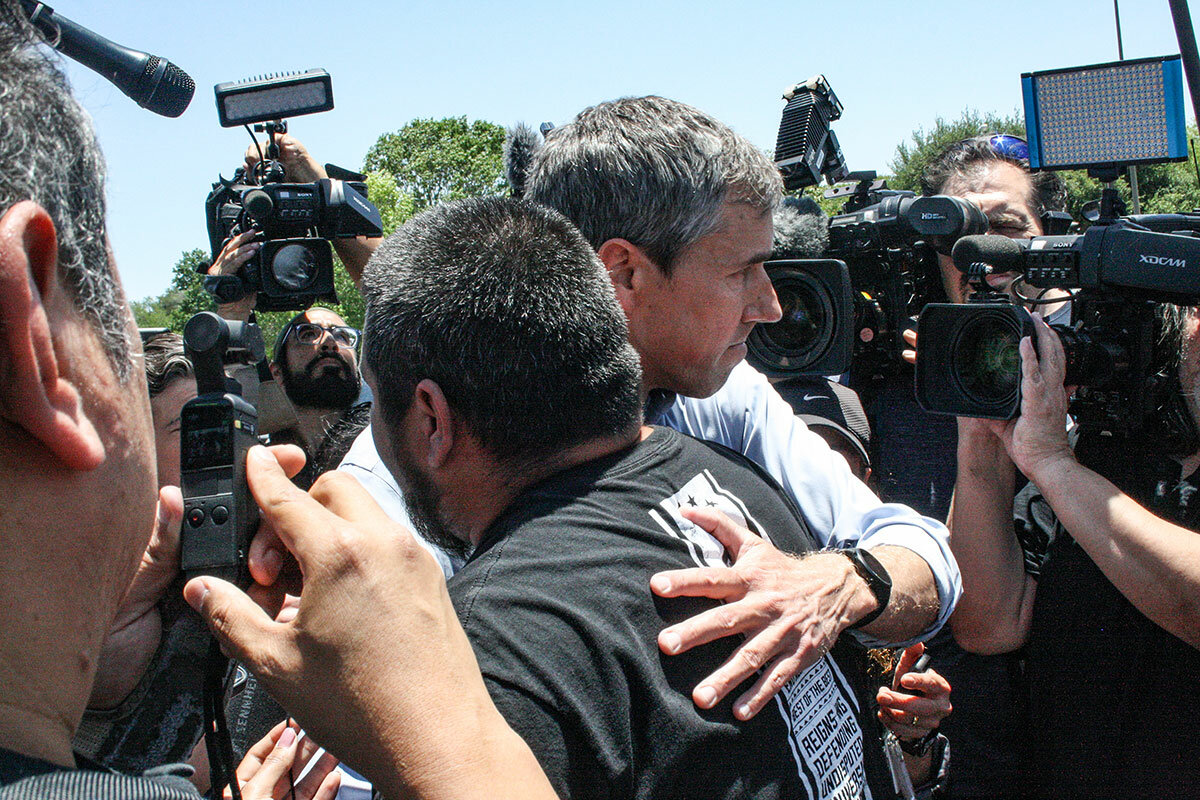
By this point, the sun has burned away the cool morning air. There is a sense that disbelief is turning to anger. Uvalde cycles, like the communities before it, through the stages of grief. As of this afternoon, even law enforcement seemed stunned.
“We have yet to find a clue that might have given us any type of idea that he was about to do something like this,” said Col. Steve McGraw, director of the Texas Department of Public Safety, at the press conference.
“We have scoured everything we could find, what could have indicated that this individual was a threat to the community, and we have found none at all,” he added. “We’re astounded because there’s usually something out there.”
This is a small town in South Texas, and provides all the trappings of a small Texas town. There’s a main street, with a big feed store and a grocery store, an H-E-B. There’s a Dairy Queen and a handful of taquerias. The high school is the home of the Fighting Coyotes and Lobos, and English and Spanish cohabit peacefully – though it wasn’t always this way.
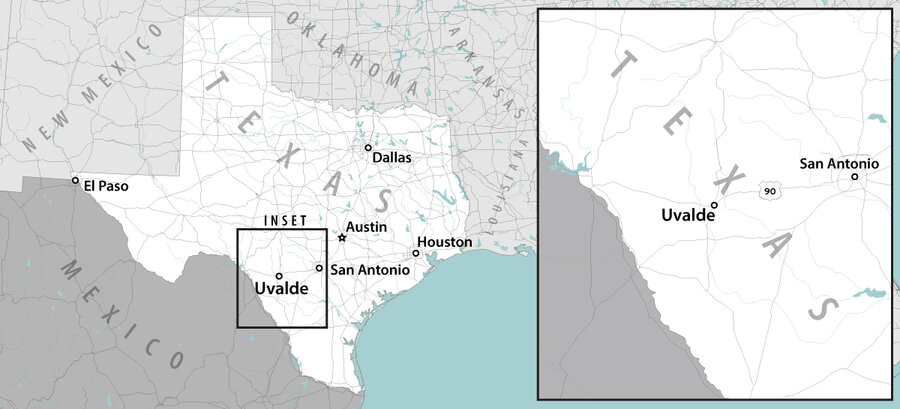
Ramiro Gamez has lived here for three decades. He woke up this morning afraid for his grandchildren, he says in Spanish. His hands are shaking.
“I’m going to keep a close eye on [them] now,” he adds.
Two dogs play at Ms. Salazar’s feet as she stands in her backyard. Trying to sleep, she had hoped to wake up and learn it had all been a dream. Now she’s waiting for her parents, and for her cousin’s family to get here from the nearby town of Eagle Pass, where her cousin is from.
Uvalde “is not going to be the same ever again,” she says.
But whatever happens now, the town will face it together.
Ms. Salazar tried living in a big city once. She lived in San Antonio for a while, but she came back here. She’s not about to leave again.
“Family, friends, being together ... being here” gives her hope, she adds. “Our community is strong. We’ll get through this.”
Staff writer Patrik Jonsson contributed to this report.


Why Fed says fighting inflation is Job 1, despite recession risk
Battling inflation is tricky business. Raise interest rates too fast, and the economy goes into recession. Our reporter looks at how the Federal Reserve is trying to create a soft landing for the U.S. economy.

- Quick Read
- Deep Read ( 6 Min. )
From stocks to housing to retailing, indicators of a slowing U.S. economy are flashing red. And it’s not just the United States: the International Monetary Fund recently marked down its forecast for global economic growth.
This may sound like bad news. But to the Federal Reserve, a slowdown could be just what is needed to tame inflation and reset expectations of where prices are headed after a torrid period of fiscal and monetary expansion.
The risk is that the Fed’s inflation-busting cure, boosting interest rates, could prove too strong and that, sooner or later, a recession will follow. That risk, which President Biden acknowledged Monday while insisting that a recession wasn’t inevitable, is what makes central banking as much art as science. For Fed policymakers, it’s about finding the right balancing point between support and restraint, so the economy can flourish but not overheat.
“We don’t really understand recession dynamics all that well,” says Louise Sheiner, policy director for the Hutchins Center on Fiscal and Monetary Policy at the Brookings Institution. That makes it hard to gauge “exactly how much the Fed needs to move to get inflation down without [triggering] a bad dynamic where consumers get pessimistic and businesses get pessimistic.”
Why Fed says fighting inflation is Job 1, despite recession risk

From stocks to housing to retailing, indicators of a slowing U.S. economy are flashing red. Consumer sentiment in a closely watched monthly survey by the University of Michigan fell in April to its lowest level in a decade. And it’s not just the United States: the International Monetary Fund recently marked down its forecast for global economic growth in 2022 to 3.6 percent, compared to a 4.4 percent estimate in January.
This may all sound like bad news. But to the Federal Reserve, a slowdown could be just what is needed to tame inflation and reset expectations of where prices are headed after a torrid period of fiscal and monetary expansion. For its part, the Fed is trying to engineer a soft landing for the U.S. economy by raising interest rates and signaling more hikes to come.
The risk is that the Fed’s inflation-busting cure could prove too strong and that, sooner or later, a recession will follow. That risk, which President Biden acknowledged Monday while insisting that a recession wasn’t inevitable, is what makes central banking as much art as science, for all the data crunching that goes into interest rate setting.
For Fed policymakers, it’s about finding the right balancing point between support and restraint, so the economy can flourish but not overheat. And it’s particularly perilous now: Even though the pandemic stimulus programs, which helped goose consumer demand, have already faded, inflation is running at 40-year highs.
“We don’t really understand recession dynamics all that well,” says Louise Sheiner, policy director for the Hutchins Center on Fiscal and Monetary Policy at the Brookings Institution. That makes it hard to gauge “exactly how much the Fed needs to move to get inflation down without [triggering] a bad dynamic where consumers get pessimistic and businesses get pessimistic.”
Critics say the Fed was behind the curve last year as inflation picked up pace, stoked by stimulus spending and rock-bottom borrowing costs. Now the pendulum has swung the other way, with fears that policymakers will overshoot in tackling rising prices.
Treasury Secretary Janet Yellen warned last week that the Fed faced “a very difficult economic situation” in trying to contain inflation without pushing the U.S. into a recession. “I think it’s conceivable there could be a soft landing. It requires both skill and luck,” she told reporters in Germany.
By law, the Fed’s job is to pursue – and often strike a balance between – the twin goals of price stability and full employment. Employers have been raising wages to recruit workers who have more options in a tight labor market and are also sitting on more household savings. Raising interest rates too abruptly could end that cycle just when more adults are returning to the workforce after the pandemic’s disruptions.

In 1994, the Fed cooled inflation without tanking the economy, which continued to expand at a steady clip. But there’s no simple formula to follow, which is why soft landings are elusive, warns Joseph Gagnon, a senior fellow at the Peterson Institute for International Economics.
“We have many examples of the Fed fighting inflation and causing a recession,” he says.
In 1994, inflationary pressures were largely domestic. Now the Fed has to weigh the impact of external supply shocks, from oil and grain to computer chips and lumber. Shortages have pushed prices of these and other goods higher, contributing to U.S. inflation. War in Ukraine and repeated pandemic lockdowns in China have only added to the disruption in recent months.
The problem for central bankers is that while raising interest rates at home can dampen demand for imported goods, it doesn’t necessarily unblock supply chains. And regardless of where the Fed sets rates, the global supply chain will still need to find its own workarounds.
In March, the Fed raised its benchmark interest rate by a quarter of a percentage point, after two years of near-zero. Earlier this month, it raised it again by a half-point to a range of 0.75-1.00%.
Fed Chair Jerome Powell has signaled that two more half-point hikes are likely to follow in June and July. When asked on May 4 about the risk that tightening could hurt the economic recovery, Mr. Powell put an emphasis on long-term price stability. “There may be some pain associated with getting back to” 2% inflation, he said, adding that “the big pain over time is in not dealing with inflation and allowing it to become entrenched.” (The Fed’s inflation target is 2%.)
Polls show that inflation is top of mind for U.S. voters going into midterm elections. Lower-income consumers are hit disproportionately by higher gas and grocery prices. But the sentiment that inflation is bad, and that the government is to blame, is shared across economic classes and has forced the Biden administration on the back foot, since the White House has limited options to tackle inflation.
Some left-leaning economists argue that, with wage growth lagging behind the inflation rate, the Fed should consider letting inflation stay above its target for a longer period in order to keep the recovery going. In this view, looser monetary policy that helps lift wages at the bottom of the income distribution may be worth the risks that high inflation brings.
So far, there is little evidence of the kind of wage-price spiral seen in the 1970s, when workers demanded higher wages that then fed into higher prices for goods and services. That dynamic was partly driven by unions in key industries, where nonunionized labor is more prevalent now.
Still, labor markets are already tight, which is why the Fed is determined to get a grip on inflation, says Carola Binder, an assistant professor of economics at Haverford College. “It’s good to have a full employment economy. But we’re already there … and I don’t think it’s justifiable to push unemployment lower to help low-income workers,” she says.
The U.S. is far from alone in its dilemma. Prices have also been rising in other major economies including in Europe, where energy and food bills have spiked since Russia invaded Ukraine in February. In the U.K., the annualized rate of inflation hit 9% in April. (The U.S. rate was 8.3%.) The Bank of England and other central banks have begun raising interest rates, but all eyes are still on the Fed, given its heft and the sheer volume of dollar-denominated trade and assets.
U.S. policymakers recognize that their monetary decisions have global effects, including on capital flows into emerging markets, says Mr. Gagnon, a former Fed official. But, he notes, “they don’t act on that belief except to the extent that it would rebound” and impact financial stability in the U.S., in which case they do factor this into their policy.
But the reality is that the Fed is the world’s de facto central bank, says Mark Blyth, a professor of international economics at Brown University. He reckons that if the Fed overshoots in raising rates it could trigger “the mother of all capital flights” from riskier financial assets into U.S. bonds and other securities. And that destabilizing scenario could stay the hands of Fed policymakers who might otherwise want to tighten more aggressively.
“They’re going to talk a good game,” he predicts. “And then raise [the benchmark rate] by half a percent and see if it works.”
For all the public gripes about inflation, most expect it to abate in the future. The University of Michigan survey found that consumers expect a 3% inflation rate in five to 10 years, not much above the survey average of 2.8% during 2000-2019. Bond markets also point to modest future inflation, based on the premium paid for inflation-protected 10-year Treasury bonds.
None of which means that the Fed will avoid a hard landing. But it doesn’t suggest a return to the persistent bouts of inflation that defined the 1970s.
“A certain amount of inflation was unavoidable,” says Mr. Gagnon. “You just want to make sure people don’t think that this is permanent and so far, they don’t.”

The Explainer
When does atrocity rise to the level of genocide?
International justice defines genocide as the worst of crimes. In the Ukraine war, both sides have used the term to describe the other’s actions. Our reporter helps sift the hype from reality.

- Quick Read
- Deep Read ( 6 Min. )
Russia has claimed that its invasion of Ukraine was in part driven by the need to stop genocide in the Donbas. Ukrainians, in turn, accuse Moscow of committing genocide through war atrocities in towns like Bucha and statements by Russia’s president questioning the existence of a distinct Ukrainian identity.
As a term of international law, “genocide” is narrowly defined. It means crimes committed with the intention to destroy a “national, ethnic, racial or religious group,” whether in whole or in part.
The Kremlin’s accusations are flimsy in that light. Sergey Davidis, a member of the Human Rights Center Memorial in Russia, says the term genocide is being used as a smear. “Ukraine doesn’t kill Russians, doesn’t limit birthrate; there are no other forms of eliminating population.”
As for the claim that Russia is committing genocide, “specialists are reserving judgment,” says Jonathan Leader Maynard, a lecturer at King’s College London. “The evidence is a bit murky at this stage.”
“[Ukrainians] see what is genuinely quite genocidal rhetoric coming out from Russian political elites and they see the atrocities on the ground,” he adds. “And they’re basically saying, look, given this rhetoric by Russian elites, Russia is committing genocide.”
When does atrocity rise to the level of genocide?
Russia has claimed that its invasion of Ukraine was in part driven by the need to stop genocide in the Donbas. Ukrainians, in turn, accuse Moscow of committing genocide through war atrocities in towns like Bucha and statements by Russia’s president questioning the existence of a distinct Ukrainian identity. But experts say the accuracy of either side’s claims depends on high legal and moral requirements that neither may be able to meet.
What constitutes “genocide”?
Polish Jewish lawyer Raphael Lemkin coined the term “genocide” as a means to describe the crime of the Holocaust, and crimes like it. But as a term of international law, “genocide” is narrowly defined.
As codified in the 1948 Genocide Convention, it means crimes committed with the intention to destroy a “national, ethnic, racial or religious group,” whether in whole or in part.
The crimes that can be considered genocidal include killing members of the group, intentionally inflicting on the group conditions that bring about its destruction, measures to prevent births within the group, and forcibly transferring children of the group to another group. To count as genocide, such acts must be driven by the intention to destroy the group. “Genocide, as a technical matter of international criminal law, is very hard to prove because of the ‘intent’ requirement,” says Larry May, professor emeritus of philosophy at Vanderbilt University and author of books on international law.
Importantly, the statute leaves out several kinds of groups that could be considered victims of genocide, as the definition was a compromise between nation states that sought to reflect the experience of Jews killed by Adolf Hitler. The concept of cultural genocide did not survive treaty negotiations. Political and ideological groups were also left out at the request of the Soviet Union.
How many genocides have there been?
There is no legal or even scholarly consensus on this.
In the 20th century, experts only consider a few cases to be clear-cut from a legal perspective. These include the Holocaust (although genocide was not prosecuted at the Nuremberg trials), the 1994 Rwanda genocide carried out by Hutus against Tutsis, and the 1995 Srebrenica massacre. More recently, the Islamic State group was deemed to have committed genocide against the Yazidi minority as a religious group.
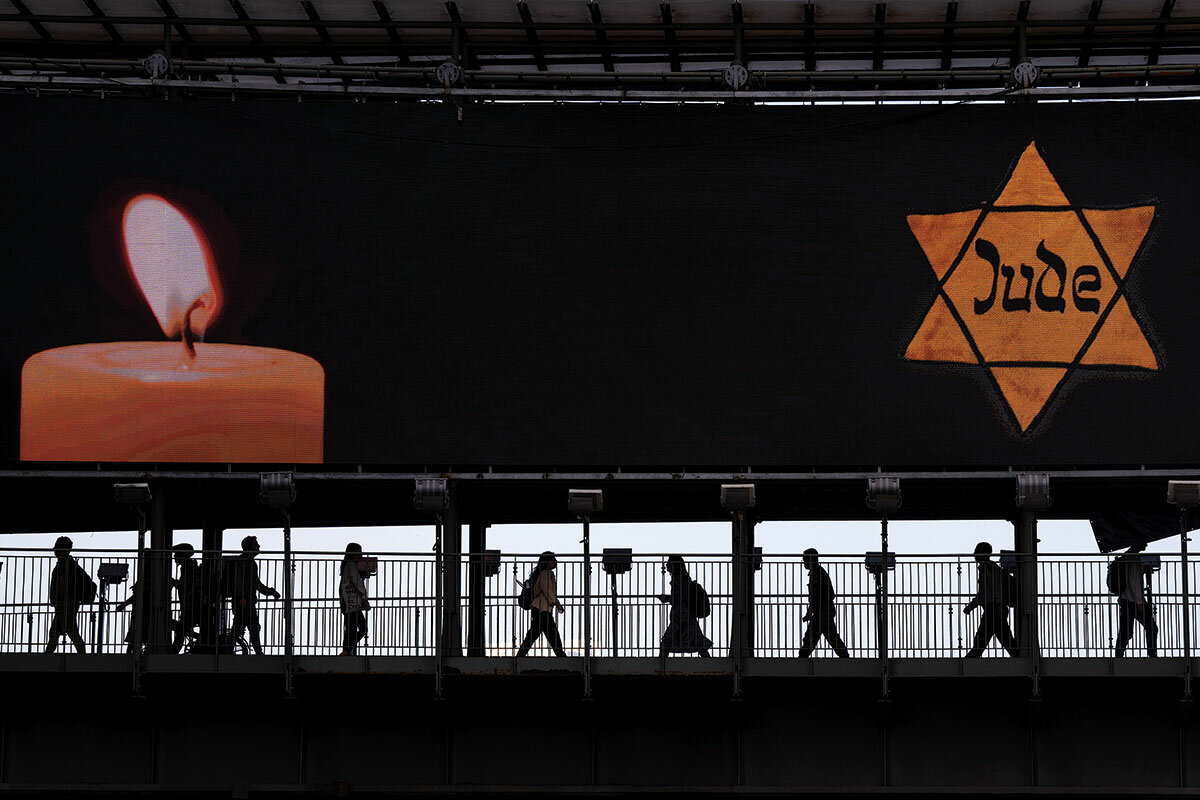
Academics take a broader definition. Many consider violence by the Khmer Rouge in Cambodia genocide, although it was primarily against political groups – a group category excluded from the convention. Some consider Guatemala’s decadeslong violent repression of the Maya community to be genocide, and indeed the South American nation was the first to try a former head of state on genocide charges.
The question of cultural genocide also fuels heated debates, anchored today in the present-day experience of China’s Uyghur minority and the history of Indigenous communities in North America and Australia.
Is there evidence for Russian and Ukrainian claims of genocide?
Russian President Vladimir Putin has played on the notion of genocide to justify his invasion of Ukraine. He claims that Ukraine is run by Nazis who are committing genocide against the Russian-speaking population of the Donetsk and Luhansk regions, collectively known as the Donbas.
“There’s no evidence at all to support that claim,” says Jonathan Leader Maynard, lecturer in international politics at King’s College London. He forms part of the International Association of Genocide Scholars, whose executive board issued a statement stating that this was a fabricated manipulation and abuse of the concept of genocide by Mr. Putin. Professor May points out that linguistic groups are not mentioned in the 1948 convention.
Sergey Davidis, a member of the Human Rights Center Memorial in Russia, says the term genocide, like Nazism, is being used as a smear. “Ukraine doesn’t kill Russians, doesn’t limit birthrate; there are no other forms of eliminating population. It is one of the most serious accusations, and whether there is a case of genocide or not is only up to international courts to judge.”
“Russia destroys all [things] Ukrainian on the occupied territory, there are repressions against Ukrainian-speaking population, Ukrainian text books are destroyed, children are taken out of the country, and there are declarations that they will be de-Ukrainianized by force,” adds Mr. Davidis. “So there are signs that allow discussion whether this phenomenon might be termed genocide.”
As for the claim that Russia is committing genocide, “specialists are reserving judgment,” says Dr. Maynard, noting it takes time to establish intent and all the facts. “The evidence is a bit murky at this stage.”
“It’s not that the Ukrainians are fabricating any information in their accusations against Russia,” he adds. “They see what is genuinely quite genocidal rhetoric coming out from Russian political elites and they see the atrocities on the ground. And they’re basically saying, look, given this rhetoric by Russian elites, Russia is committing genocide.”
Others concur Ukrainians have a “plausible claim” of genocide. “The question is, do the Russians intend to destroy Ukrainian identity as a national group, which would qualify under genocide law?” says Ernesto Verdeja, who teaches political science and peace studies at the University of Notre Dame in Indiana. “Or do they intend to dismantle and decapitate the entire political leadership of Ukraine, install their own people, and create a kind of a pro-Russian proxy? It’s hard to know.”
Complicating matters is that indiscriminate attacks and atrocities are part of the Russian military modus operandi. That makes it hard to establish genocidal intent in Ukraine. “This is how Russia fights its war,” adds Dr. Verdeja, who also conducts research on Ukraine. “We know this from Syria, or Chechnya. They just flattened everything. That doesn’t mean that it is not genocidal.”
“Genocide is often confused with ‘crimes against humanity,’ which merely require an attack against a population that is systematic and widespread,” says Professor May. “There is very good evidence that Russia is committing this international crime in Ukraine – especially since a special intent requirement is not part of the definition of this crime. But people push for the most awful term they can find, and popularly genocide is it insofar as it implies extreme evil.”
How does history shape the warring nations’ views on genocide?
Many historical mass atrocities play into the current conflict between Russia and Ukraine. Chief among them are the Nazi assaults on the Soviet Union in 1941 that involved the killing of not only Russian Jews but also Slavic peoples. Ukrainian nationalists held up as heroes today include problematic antisemitic figures like Stepan Bandera, who fought the Soviets alongside the Nazis, before the Nazis imprisoned him.
“There were, and still are, self-described Nazis in Ukraine, and Russia has used them to say they are trying to stop these Nazis from invading Russia,” says Professor May. “This has historical echoes to the fact that the German Nazis did try to invade and defeat Russia in WWII.”
Experts say the Nazi label today does not stick in contemporary Ukraine. Far-right groups are a small minority and President Volodymyr Zelenskyy is Jewish. “From the Russian perspective, anyone who is a Nazi is by definition anti-Russian and a threat,” says Dr. Verdeja.
For Ukrainians, the experience of “genocide” has been central to shaping national identity. Ukrainian authorities and many scholars consider the Holodomor – the 1932-33 famine that killed millions of Soviet Ukrainians – a genocide. It is the shared catastrophe that elders still remember and children grew up hearing about.
“That story is complicated because in that story, who are the perpetrators? Is it the Soviets or is it the Russians?” says Dr. Verdeja. “Well, it’s complicated because the history of imperial Russia and Ukraine prior to that is also a fraught history.”
Editor's note: The original version mischaracterized the type of issuance by the International Association of Genocide Scholars which criticized Mr. Putin.

Patterns
Wimbledon calls ‘fault’ on Russian tennis stars. Good move?
Sporting events – especially the Olympics – often cast themselves as neutral, beyond politics. But these venues offer a big, public platform to take a stand for what’s right. Our London columnist lays out the moral dilemma of banning Russians from Wimbledon.

- Quick Read
- Deep Read ( 4 Min. )
Is it fair to punish Russian athletes for their president’s invasion of Ukraine?
That is the moral dilemma that Wimbledon, the most prestigious individual sports event on the planet, has been wrestling with. And eventually, the tournament authorities decided they had no choice but to bar competitors from Russia and its ally, Belarus.
The sporting world is split, with compelling arguments on both sides. Opponents of the ban point out that the Russian players – including world No. 2 Daniil Medvedev – would have been competing as “neutrals” in any case. And Russian President Vladimir Putin did not consult any tennis players before invading Ukraine. On top of that, where do you draw the line when it comes to government behavior?
In the end, Wimbledon decided to preempt the possibility that a Russian player might win the tournament, handing Mr. Putin a Grand Slam-sized propaganda victory. But they also avoided putting Ukrainian players up against opponents from Russia, even as their own families might be cowering under Russian bombardment.
After all, it’s a matter of perspective: Set the opportunity being denied the excluded players against the life-and-death plight that millions of Ukrainians face. They don’t compare.
Wimbledon calls ‘fault’ on Russian tennis stars. Good move?

It’s the most prestigious individual sports competition on the planet. Yet the event now finds itself in the eye of a political hurricane – over its decision to exclude Russian players.
The blowback enveloping next month’s Wimbledon Tennis Championship is part of a broader controversy surrounding worldwide efforts to isolate Russian President Vladimir Putin over his invasion of Ukraine.
At its core is a moral dilemma: whether it’s fair to punish individual Russians – sports stars, cultural figures, or other influential expatriates – for their president’s act of aggression, and the terror his forces are unleashing on Ukraine’s civilian population.
Since the invasion, that question has been largely finessed. Sporting and cultural sanctions have been aimed at groups rather than at individuals – Russia’s national sports teams, and its cultural troupes and organizations, for example.
But the move by Wimbledon, the oldest and most celebrated of tennis’s four Grand Slam tournaments, has changed that – especially with this week’s pushback by the sport’s tour organizers, the Association of Tennis Professionals and the Women’s Tennis Association.
They announced they were stripping Wimbledon of its tour-ranking points, reducing it to an exhibition event.
There are compelling arguments on both sides. And if only because my own instinct, on balance, is to side with Wimbledon’s decision, I’ll begin with the reasons it has provoked such anger from the players’ representatives.
Their main point is that tennis is an individual sport and that Wimbledon is practicing unfair discrimination. It is denying Russian players – including world No. 2 Daniil Medvedev – a chance to compete merely because of the passports they hold.
Neither he nor other players being excluded – including stars from Belarus, Mr. Putin’s autocratic ally and neighbor – represent any particular country. The tour organizations themselves had already responded to the Ukraine invasion by requiring them to play as “neutrals.”
Other individual competitors have raised other objections.
This war is Vladimir Putin’s war, they argue. He did not consult any Russian tennis players before invading Ukraine.
They also worry about the precedent. Yes, the war in Ukraine is an especially stark example of a country launching a brutal attack aimed at erasing the independent existence of a neighboring state. But a host of other countries face allegations of serious human-rights violations. Where do you draw the line?
Powerful points, all. And Wimbledon was aware of them when it began contemplating whether, and how, to exclude Russian players.
It was unfamiliar territory for tournament organizers. They would ordinarily have been focusing on ensuring the club’s grass courts were perfectly tended, preparing for hundreds of thousands of spectators and stocking up on Wimbledon’s trademark strawberries and cream.
But they came to believe inaction was not a viable option. This may have been partly because of Britain’s leading role in the West’s pushback against Mr. Putin, though Wimbledon’s top brass has stressed the government merely offered “guidance.”
Equally important was the depth of grassroots anger, in Britain and elsewhere, over the invasion.
Wimbledon ended up weighing a range of options. One would have allowed Russians and Belarusians to compete, but only if they gave private assurances they did not support the war. That was shelved amid concern it would leave the players and their families open to repercussions back home.
In the end, a main reason for the ban, the organizers indicated, was to avoid the possibility that a Russian or Belarusian might win the championship. That would have given him or her the starring role in an internationally televised presentation ceremony on Wimbledon’s iconic Centre Court – a Grand Slam-sized propaganda victory for Mr. Putin.
But a further consideration seems to have been to avoid obliging Ukrainian players to play against opponents from Russia, even as their own families might well be cowering under Russian bombardment.
And it’s that which, in large part, sways me in favor of what Wimbledon has done.
It’s a matter of perspective: Set the opportunity denied to excluded players against the life-and-death plight that millions of Ukrainians face. They don’t compare.
There’s another reason, which I admit may be unfair to the Russian and Belarusian players, since only they can fully assess the implications for themselves and their families of the way in which they respond to the war.
It is this: They are well-known figures back home. In a conflict like this one, so obviously the result of Mr. Putin’s attempt to crush a militarily weaker neighbor, their voices matter. One Russian player, world No. 8 Andrey Rublev, scribbled the words “No war please” on a courtside TV lens in Dubai, United Arab Emirates, days after the invasion. None, however, has explicitly criticized the Russian attack or Mr. Putin. Most have stayed silent.
But some Russians are speaking out, despite the potential cost. Just this week Boris Bondarev, a career diplomat with Russia’s United Nations mission in Geneva, resigned his post publicly.
“The aggressive war unleashed by Putin against Ukraine is not only a crime against the Ukrainian people” he wrote in an open letter of protest, “but also, perhaps, the most serious crime against the people of Russia.”
It served as a reminder that along with the terrible ordeal facing millions in Ukraine, the Russian people are also paying a price – in ways far more profound than their tennis stars being denied a chance to shine at Wimbledon.

In Pictures
A taste of Afghanistan helps these bakers find home in India
In an engaging photo essay about Afghan bread-makers in Delhi, India, we find they offer recipes that include humor and the unique taste of home.

- Quick Read
- Deep Read ( 3 Min. )
-
By Shefali Rafiq Contributor
Najibullah heads to the bakery as soon as the birds start chirping. He and his co-workers are among the many Afghan refugees to seek safety in India.
The bread-making starts at 7 a.m. and goes until 8 p.m., with small breaks in between. Afghan naan is different in shape, texture, and taste from Indian varieties. While the main ingredient – wheat flour – is the same, Afghan bakers hand-shape the dough, rather than rolling it out, and their use of a tandoor results in large, pillowy rounds. It is eaten by not only Afghans, but also by Iraqis, Sudanese, and Kashmiris, and now by local Indian customers, too.
Najibullah says he and his colleagues have no plans to go back to Afghanistan. When asked if they miss their home, he says with a smile, “This is our home now.”
Click the “deep read” button to view the full photo essay.
A taste of Afghanistan helps these bakers find home in India
For Najibullah, the birds act as his alarm clock. As soon as the chirping starts, he leaves his apartment for the small bakery shop in the Lajpat Nagar area of south Delhi. He does not care about the weather or the time, but trusts the birds.
He and three co-workers, Wali Khiri, Shahrukh, and Niamatullah, have been working in the shop for the last seven years. They are among the many Afghan refugees to seek safety in India. Since the late 1990s, Afghan naanwais (makers and sellers of naan, or bread) have been plying their trade in India.
For the four young men, bread-making starts at 7 a.m. and goes until 8 p.m., with small breaks in between. They mix wheat flour with water, yeast, salt, and sugar and set it aside. After this, dough balls are made and weighed so that each one is the same size. The balls are then flattened and kept under a cloth for the yeast to do its work. Then the rounds are shaped by hand, imprinted with a decorative pattern, and sprinkled with water and sesame seeds before going into the tandoor, or clay oven. The men spend the time chatting and listening to Wali Khiri’s jokes – they say he has a great sense of humor.
Afghan naan is different in shape, texture, and taste from Indian varieties. While the main ingredient – wheat flour – is the same, Afghan bakers hand-shape the dough, rather than rolling it out, and their use of a tandoor results in large, pillowy rounds. The bread is enjoyed alongside curries at meals and eaten plain or topped with butter as a snack throughout the day. It is eaten by not only Afghans, but also by Iraqis, Sudanese, and Kashmiris, and now by local Indian customers, too.
According to Wali Khiri, they are able to sell 500 loaves a day and are doing decent business. After Afghanistan was retaken by the Taliban in 2021, Afghans who had traveled to India for medical treatment or jobs went home, which affected sales. “We would otherwise sell 1,500 breads a day,” he says.
The bakers also sell to small food stalls and local restaurants, with Niamatullah making the deliveries on his bicycle.
Najibullah says they have no plans to go back to Afghanistan. When asked if they miss their home, he says with a smile, “This is our home now.”
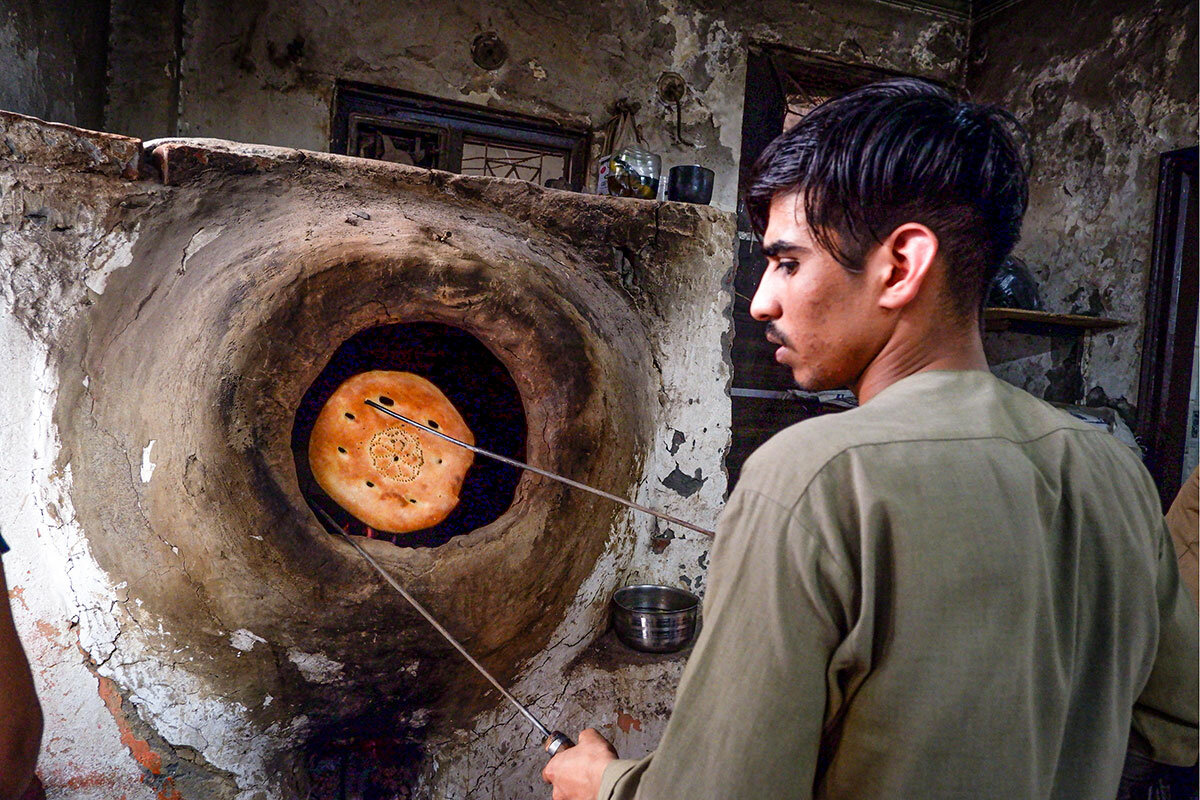
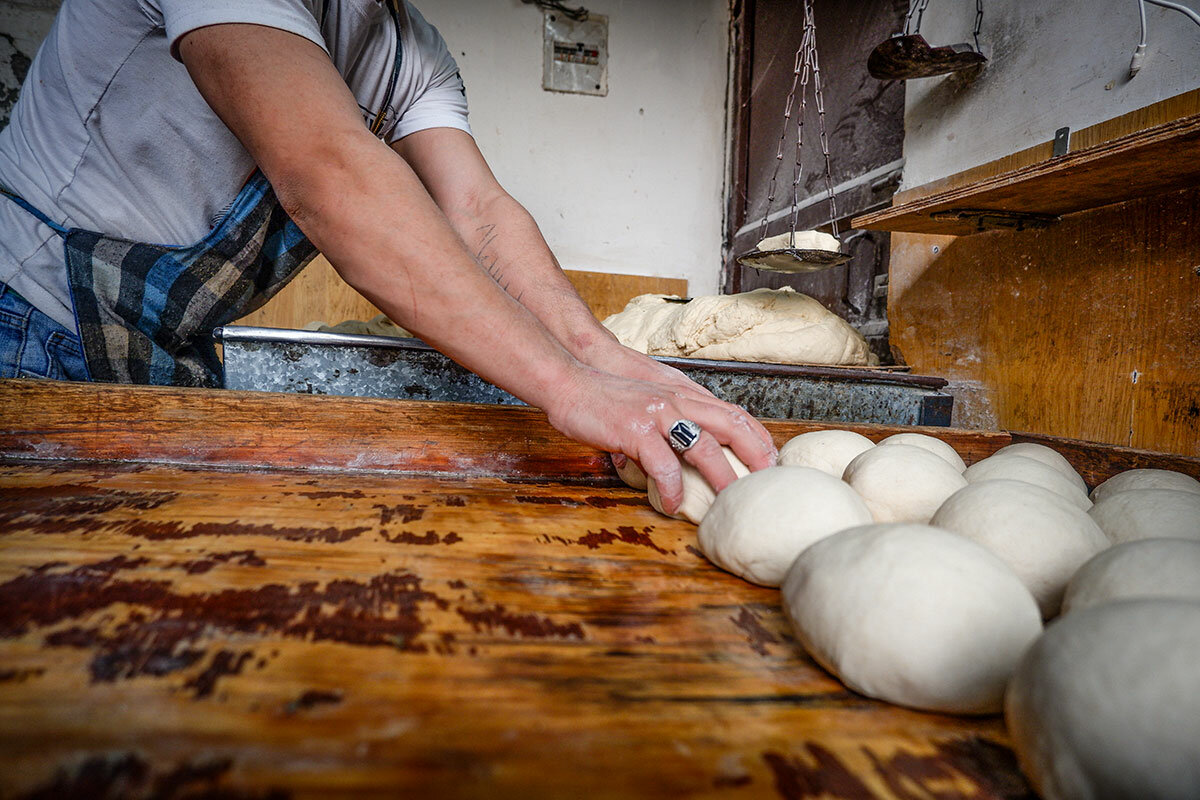
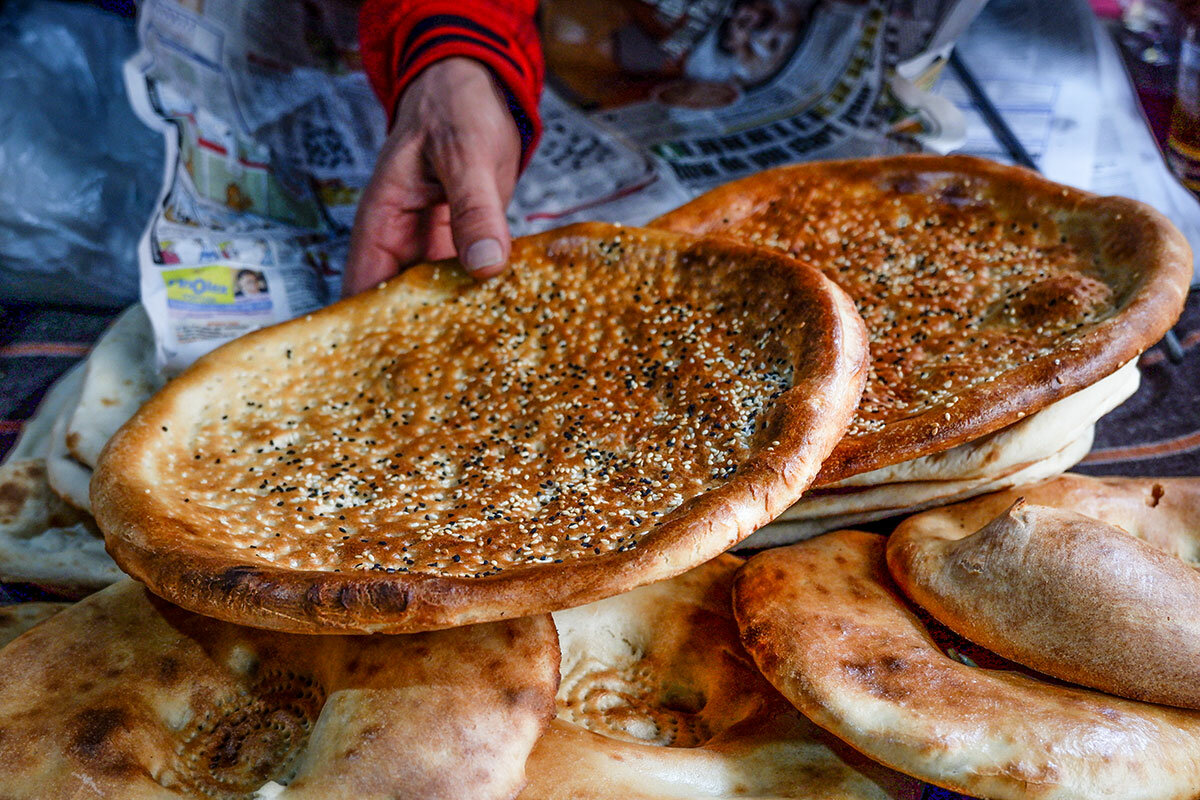
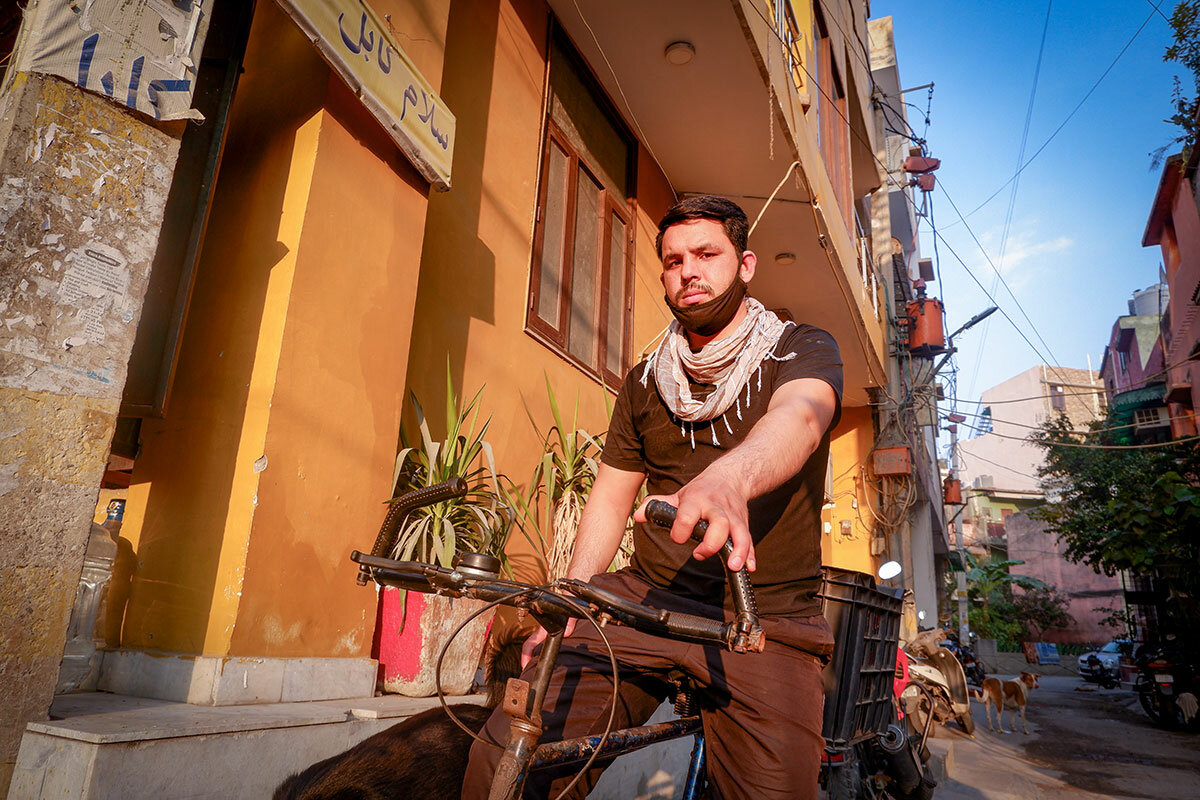


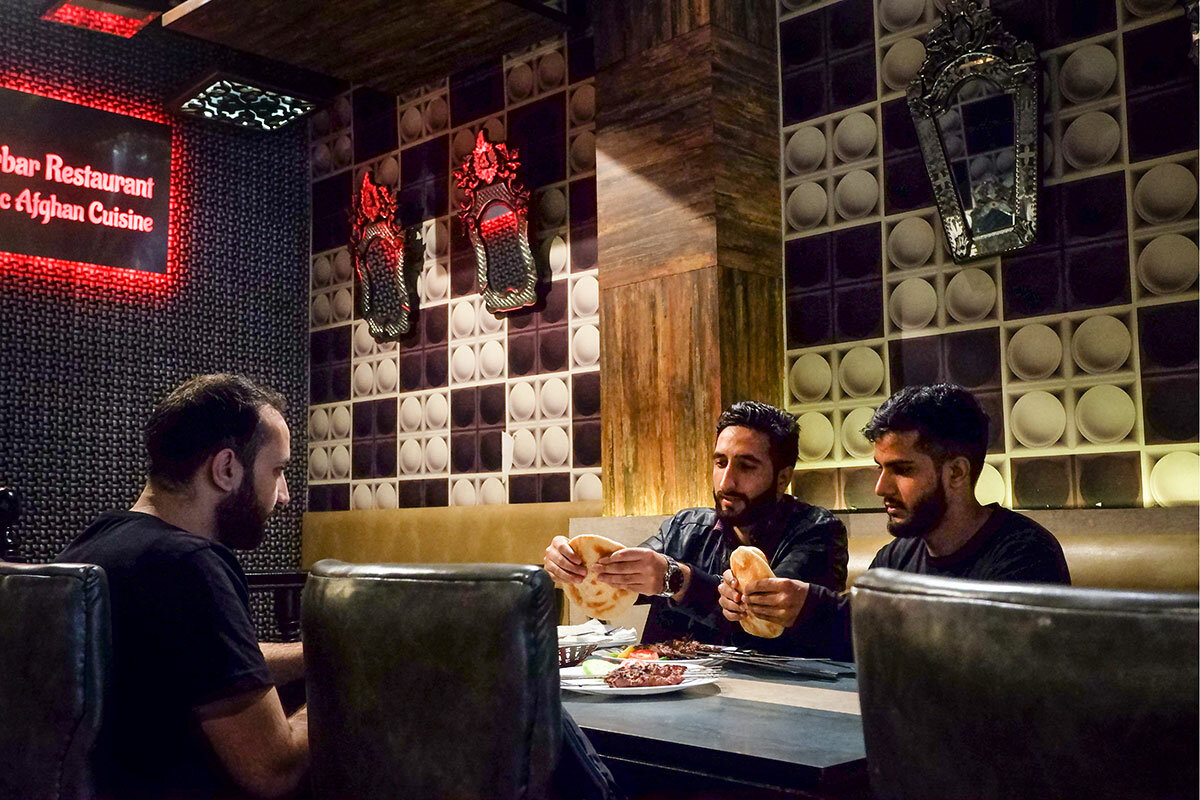
Other headline stories we’re watching
(Get live updates throughout the day.)The Monitor's View
A basis for healing in Uvalde
- Quick Read
- Deep Read ( 2 Min. )
-
By the Monitor's Editorial Board
Tuesday’s fatal shooting of at least 19 schoolchildren and two teachers in Uvalde, Texas, has led to national calls for tougher gun controls and better help for troubled young people. Yet within Uvalde itself, the crucial reaction has come from its religious leaders.
“We need a light in the darkness,” Doug Swimmer, pastor of The Potter’s House Church, told ABC News. Roman Catholic Archbishop Gustavo García-Siller told a congregation that innocent people were taken away but it will be innocent people who will get the community out of this crisis.
These initial responses – which include prayers, vigils, and consolation of victim families – cannot be easily dismissed. For sure, the debate after this shooting will center on issues like school safety, psychological services, and stricter regulations. Yet any solution relies on Americans, either locally or nationally, first finding shared compassion for communities like Uvalde. Such compassion is a common denominator for healing.
A basis for healing in Uvalde

Tuesday’s fatal shooting of at least 19 schoolchildren and two teachers in Uvalde, Texas – the second-worst school shooting in American history – has led to national calls for tougher gun controls and better help for troubled young people. Yet within Uvalde itself, the crucial reaction has come from its religious leaders.
“We need a light in the darkness,” Doug Swimmer, pastor of The Potter’s House Church, told ABC News. Roman Catholic Archbishop Gustavo García-Siller told a congregation that innocent people were taken away but it will be innocent people who will get the community out of this crisis.
These initial responses – which include prayers, vigils, and consolation of victim families – cannot be easily dismissed. For sure, the debate after this shooting will center on issues like school safety, psychological services, and stricter regulations. Yet any solution relies on Americans, either locally or nationally, first finding shared compassion for communities like Uvalde. Such compassion is a common denominator for healing.
“What we have to offer is ourselves,” said David Reed, Catholic bishop of West Texas, in response to the tragedy. “To turn ourselves, our hearts and minds, to those who are suffering in Uvalde – to reach out our hands to lift up and to extend our arms to embrace. ... We have received the power to love and to resist hatred. And we can pray. We must pray. Ignore the cynics, and pray with all your heart. ... And listen to God answering in return. ... Give yourself over to opportunities to join in the Spirit’s work of binding up and healing. Love with all you’ve got, and never, ever surrender to the darkness.”
In the wake of human tragedies, prayer is a practical source of strength and an impetus for moral courage that recognizes humanity’s innate innocence and worth. It can also be a starting point for renewal of the institutions that protect society. James Madison, author of the Bill of Rights, argued that “the transcendent law of nature and of nature’s God ... declares that the safety and the happiness of society are the objects at which all political institutions aim and to which all such institutions must be sacrificed.”
That divine law has a place in shaping human laws, and will help the United States find a balance between competing arguments over how to solve mass gun violence. As Mr. Swimmer said, “The one thing that is going to get us through is God’s grace and God’s love.”

A Christian Science Perspective
Each weekday, the Monitor includes one clearly labeled religious article offering spiritual insight on contemporary issues, including the news. The publication – in its various forms – is produced for anyone who cares about the progress of the human endeavor around the world and seeks news reported with compassion, intelligence, and an essentially constructive lens. For many, that caring has religious roots. For many, it does not. The Monitor has always embraced both audiences. The Monitor is owned by a church – The First Church of Christ, Scientist, in Boston – whose founder was concerned with both the state of the world and the quality of available news.
Can you live without anxiety?
- Quick Read
- Read or Listen ( 1 Min. )
-
By Heidi Kleinsmith Salter
At times it can seem as if worry and anxiety are just things we have to live with. But as this short podcast explores, we are divinely empowered to go beyond simply coping and to find healing and freedom.
Can you live without anxiety?
To listen, click the play button on the audio player above.
For an extended discussion on this topic, check out “Can you live without anxiety?”, the March 14, 2022, episode of the Sentinel Watch podcast on www.JSH-Online.com.

A message of love
Trying to stay dry

A look ahead
Thanks for joining us. Come back tomorrow: We’ll look at the meteoric rise of Francia Márquez, an environmental activist who has achieved rock-star status ahead of Colombia’s presidential election.



